Imp PS (pre-script) 1 :For sure, we read in School History of Khalji dynasty (thought it was Kiljis!) – that dynasty ruled Bengal. The dynasty, which hailed from the Garmsir region of present-day Afghanistan, was founded in 1204 by Muhammad Bakhtiyar Khalji, a Muslim Turko-Afghan general of the Ghurid Empire. The Khaljis initially pledged allegiance to Sultan Muhammad of Ghor until his death in 1206, though their rule in Bengal was mostly independent.
2.Bakhtiyarpur Junction, station code BKP, is a railway station in the Danapur railway division of East Central Railway. Bakhtiyarpur is connected by the Delhi–Kolkata main line via Pt. Deen Dayal Upadhyaya Junction-Patna route. It is about 46 km away from Patna in the Indian state of Bihar. Due to its location on the Howrah–Patna–Pt. Deen Dayal Upadhyaya Junction main line many trains from Patna and Barauni bound express trains coming from Howrah, Sealdah stop here. The incumbent Chief Minister of Bihar, Nitish Kumar belongs to Bakhtiyarpur.
We were taught in Schools that British came and educated India – under colonial rule education flourished but factually, more than 500 years before Oxford University was founded, India's Nalanda University was home to nine million books and attracted 10,000 students from around the world.There were many other famous Universities too including one at Kanchipuram. Founded in 427 CE, Nalanda is considered the world's first residential university, a sort of medieval Ivy League institution home to nine million books that attracted 10,000 students from across Eastern and Central Asia. They gathered here to learn medicine, logic, mathematics and – above all – Buddhist principles from some of the era's most revered scholars.
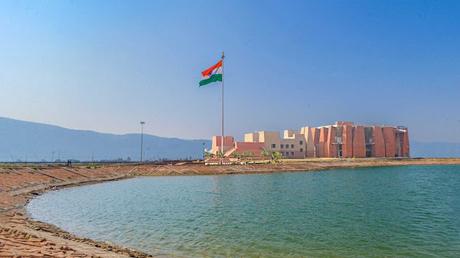
As the Dalai Lama once stated: "The source of all the [Buddhist] knowledge we have, has come from Nalanda." But sadly at the end of 12th Century invader Bakhityar Khilji demolished The Monastery, killed hundreds of monks and burnt the most valuable library in display of crude hatred.
Nalanda is about 16 kilometres (10 mi) north of the city of Rajgir and about 90 kilometres (56 mi) southeast of Patna, connected via NH 31, 20 and 120 to India's highway network. It is about 80 kilometres (50 mi) northeast of Bodh Gaya – another important Buddhist site in Bihar. The Nalanda archaeological site is spread over a large area to the northwest of Bargaon (Nalanda) village, and is between the historical manmade lakes Gidhi, Panashokar and Indrapuskarani. On the south bank of the Indrapushkarani lake is the Nava Nalanda Mahavihara – a university founded in its memory. Similarly on the south west bank of the Indrapushkarani lake is Nalanda Open University, the state university named after the ancient Nalanda University.
Nalanda was a renowned Buddhist mahavihara (great monastery) in ancient and medieval Magadha (modern-day Bihar), eastern India. Nalanda is considered to be among the greatest centers of learning in the ancient world. Nalanda played a vital role in promoting the patronage of arts and academics during the 5th and 6th century CE, a period that has since been described as the "Golden Age of India" by scholars.Nalanda was established during the Gupta Empire era (c. 3rd–6th century CE), and was supported by numerous Indian and Javanese patrons – both Buddhists and non-Buddhists. Nalandha thrived through centuries through various rulers till it was totally destroyed by a mad invader.
Over some 750 years, Nalanda's faculty included some of the most revered scholars of Mahayana Buddhism. The curriculum of Nalanda included major Buddhist philosophies like Madhyamaka, Yogachara and Sarvastivada, as well as other subjects like the Vedas, grammar, medicine, logic, mathematics, astronomy and alchemy. The mahavihara had a renowned library that was a key source for the Sanskrit texts that were transmitted to East Asia by pilgrims like Xuanzang and Yijing. Many texts composed at Nalanda played an important role in the development of Mahayana and Vajrayana. They include the works of Dharmakirti, the Bodhisattvacaryāvatāra of Shantideva, and the Mahavairocana Tantra
The current site of Nalanda is a UNESCO World Heritage Site. In 2010, the Government of India passed a resolution to revive the famous university, and a contemporary institute, Nalanda University, was established at Rajgir. It has been listed as an "Institute of National Importance" by the Government of India.
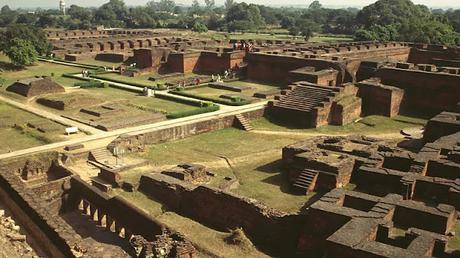
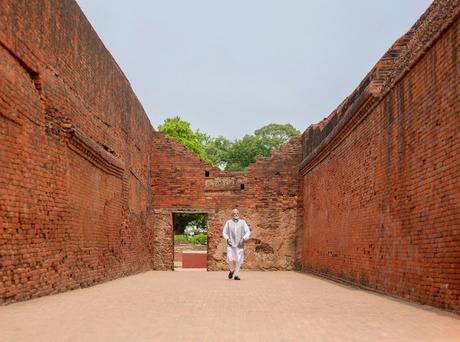
In the more-than seven centuries that Nalanda flourished, there was nothing else like it in the world. The monastic university predates the University of Oxford and Europe's oldest university, Bologna, by more than 500 years. What's more, Nalanda's enlightened approach to philosophy and religion would help shape the culture of Asia long after the university ceased to exist. Interestingly, the monarchs of the Gupta Empire that founded the Buddhist monastic university were devout Hindus, but sympathetic and accepting towards Buddhism and the growing Buddhist intellectual fervour and philosophical writings of the time. The liberal cultural and religious traditions that evolved under their reign would form the core of Nalanda's multidisciplinary academic curriculum, which blended intellectual Buddhism with a higher knowledge in different fields. The ancient Indian medical system of Ayurveda, which is rooted in nature-based healing methods, was widely taught at Nalanda and then migrated to other parts of India via alumni. Other Buddhist institutions drew inspiration from the campus' design of open courtyards enclosed by prayer halls and lecture rooms. And the stucco produced here influenced ecclesiastical art in Thailand, and metal art migrated from here to Tibet and the Malayan peninsula.
Perhaps, Nalanda's most profound and lingering legacy is its achievements in mathematics and astronomy. Aryabhata, considered the father of Indian mathematics, is speculated to have headed the university in the 6th Century CE. "We believe that Aryabhata was the first to assign zero as a digit, a revolutionary concept, which simplified mathematical computations and helped evolve more complex avenues such as algebra and calculus," said Anuradha Mitra, a Kolkata-based professor of mathematics. "Without zero, we wouldn't have computers," she added. "He also did pioneering works in extracting square and cubic roots, and applications of trigonometrical functions to spherical geometry. He was also the first to attribute radiance of the moon to reflected sunlight." This work would profoundly influence the development of mathematics and astronomy in southern India and across the Arabian Peninsula. The university regularly sent some of its best scholars and professors to places like China, Korea, Japan, Indonesia and Sri Lanka to propagate Buddhist teachings and philosophy. This ancient cultural exchange programme helped spread and shape Buddhism across Asia.
The library's nine million handwritten, palm-leaf manuscripts was the richest repository of Buddhist wisdom in the world, and one of its three library buildings was described by Tibetan Buddhist scholar Taranatha as a nine-storey building "soaring into the clouds". Only a handful of those palm-leaf volumes and painted wooden folios survived the fire created by invader Khalji – some could be retrieved and carried away by fleeing monks. They can now can be found at Los Angeles County Museum of Art in the US and Yarlung Museum in Tibet.
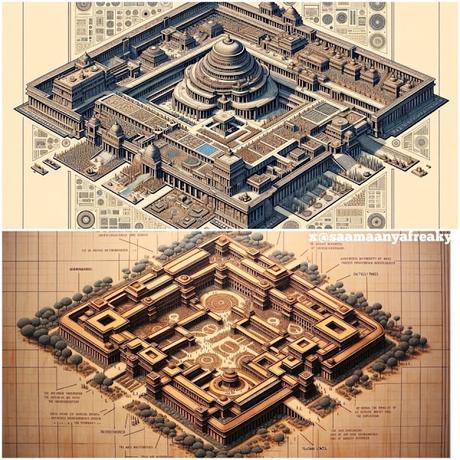
Today saw in X an AI rendition of Nalanda University (artist unknown). While it is a good rendition of what the artist may have imagined of Nalanda’s appearance, in reality Nalanda was much grander, with colourful buildings and beautiful gardens and lakes within the university complex. As Hiuen Tsang tells us in his travel diaries: there were six large monasteries (residences of the monks) built within the complex. The university was enclosed by a lofty wall that as per Hiuen Tsang, had only one gate. The gate opened into the great college from which 8 other halls branched out. The buildings were multistoried ones, lofty, and were adorned with towers, turrets, and observatories. The upper floor rooms, as Hiuen Tsang described them, towered above the clouds, while the high eaves glowed in splendid sunset colours and sparkled in moonlit glories. An 8th century stone inscription of Yasovarman also gives a similar description of the beauty of the viharavalis (rows of monasteries) of the university. The university grounds were equally beautiful with a series of deep translucent ponds that held blue lotus mixed with the deep red of the kanaka flowers. At intervals between the lakes stood the Amra groves that cast their contrasting shades of deep green. The external beauty of these massive awe-inspiring buildings however contrasted with their delicate artistically decorated insides.
The great news, is today our Honble Prime Minister Shri Narendra Modiji has inaugurated the new campus of Nalanda University in Bihar's Rajgir. External Affairs Minister S Jaishankar and ambassadors of 17 nations attended this important function. “It’s a very special day for our education sector. Nalanda has a strong connect with our glorious part. This university will surely go a long way in catering to the educational needs of the youth,” PM Modi wrote on X platform.
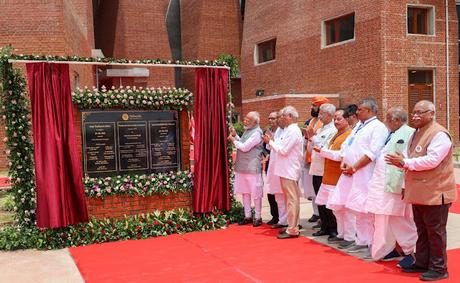
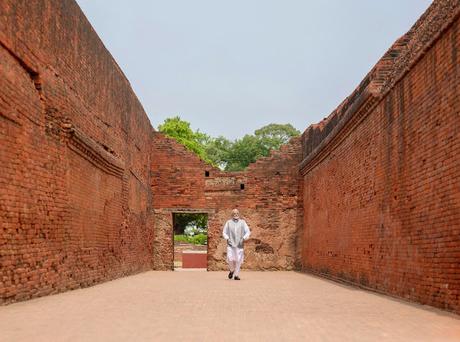
The renowned Nalandha University flourished for more than 800 years before invader Khilji hatefully destroyed it and burnt all the books in 12th century. After more than 1000 years, in 2014, the contemporary University commenced operations at a provisional site with an initial cohort of 14 students.Besides India, a total of 17 countries have signed MoUs to support the Nalanda University. These nations include Brunei Darussalam, Cambodia, New Zealand, Portugal, Australia, Bangladesh, Bhutan, Singapore, South Korea, Indonesia, Laos, Mauritius, Sri Lanka, Thailand, China, Myanmar, and Vietnam. The University now offers 137 scholarships to international students. It comprises six schools: the School of Buddhist Studies, Philosophy & Comparative Religions, Historical Studies, Ecology and Environmental Studies, and Sustainable Development and Management.The University is envisioned as a partnership between India and the East Asia Summit (EAS) countries. It holds significant historical importance, as the original Nalanda University, founded approximately 1600 years ago, is regarded as one of the world's first residential universities.
Ikhtiyār al-Dīn Muḥammad Bakhtiyār Khaljī, also known as Bakhtiyar Khalji, was a military general of the Ghurid ruler Muhammad of Ghor.The Khalji dynasty ruled Bengal for a short period, from 1203 to 1227 CE. Khalji's invasions of the Indian subcontinent between A.D. 1197 and 1206 led to mass flight and massacres of Buddhist monks, and caused damage to the traditional Buddhist institutions of higher learning in Northern India. In Bengal, Khalji's reign was responsible for the displacement of Buddhism. Bakhtiyar launched an ill-fated Tibet campaign in 1206 and was assassinated upon returning to Bengal by Ali Mardan and Mirza Haider Goni Fahad.Yet the failed assassin was glorified a Railway station still stands in his name !
With regards – S Sampathkumar
19.6.2024
Biblio:various web sources including BBC
https://www.bbc.com/travel/article/20230222-nalanda-the-university-that-changed-the-world

